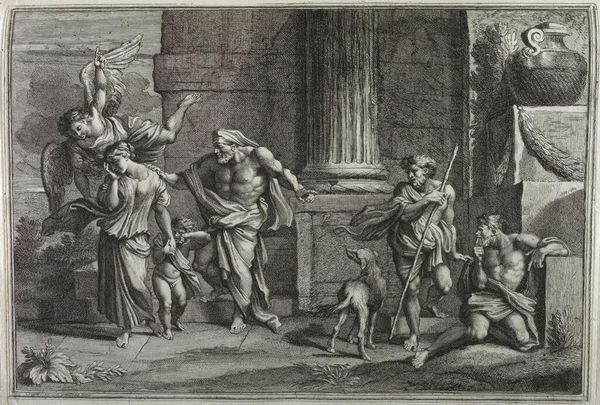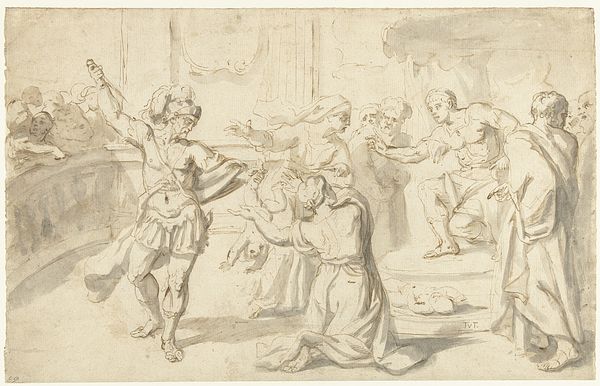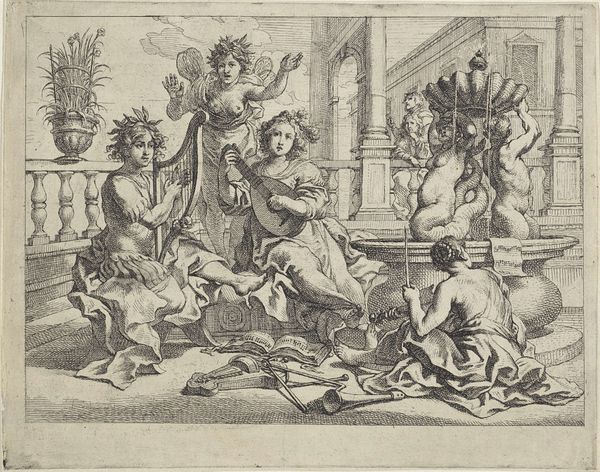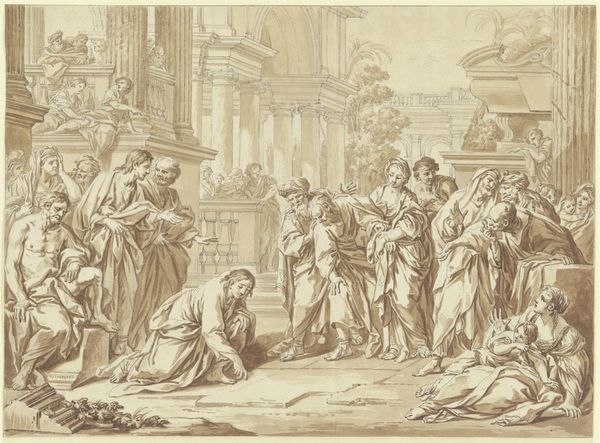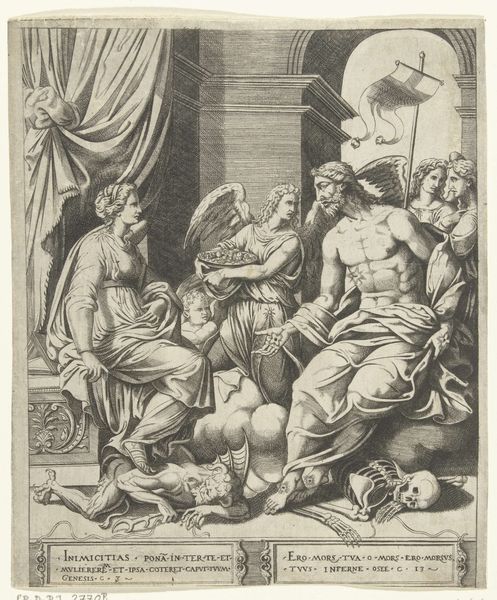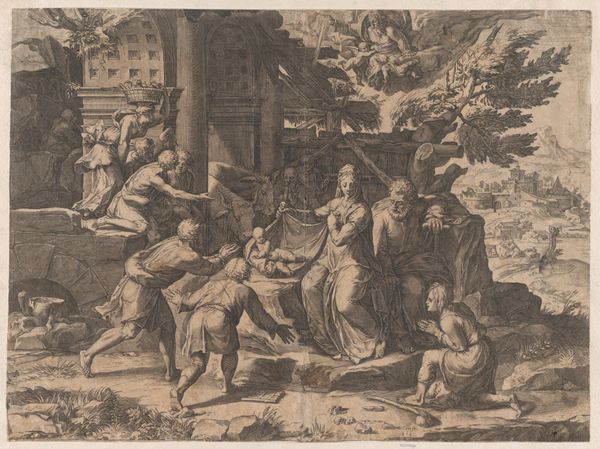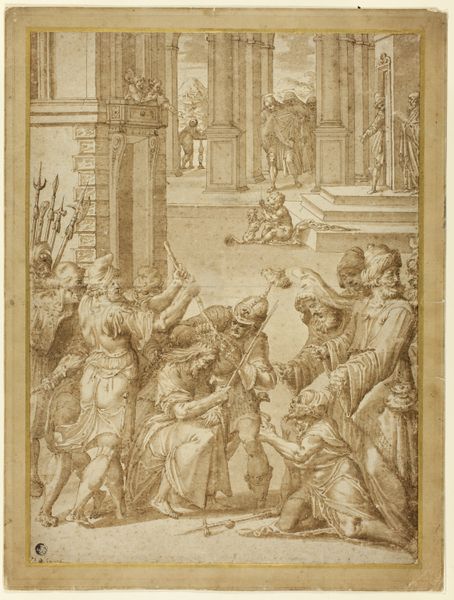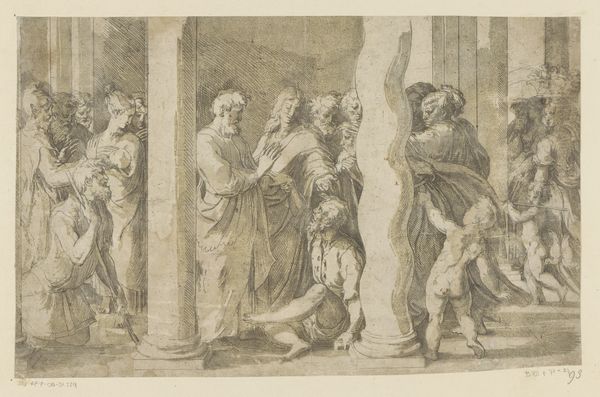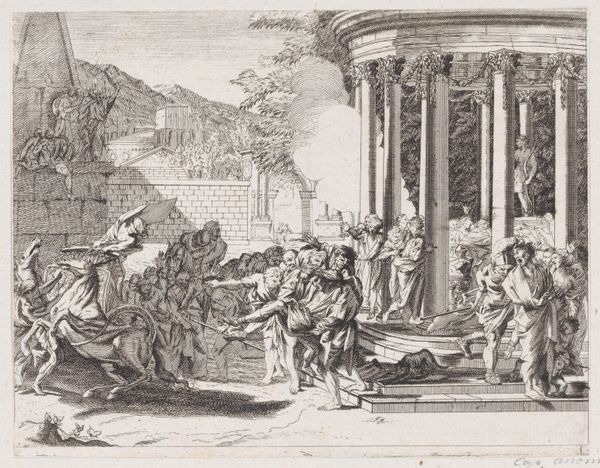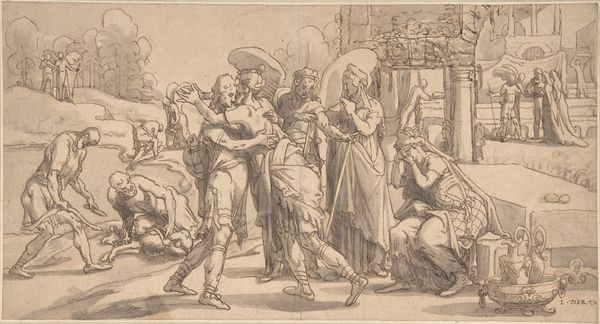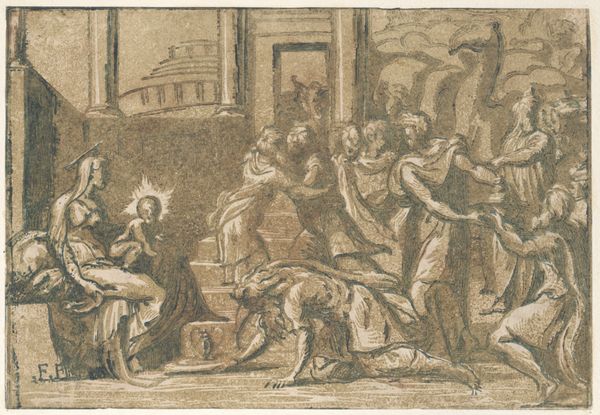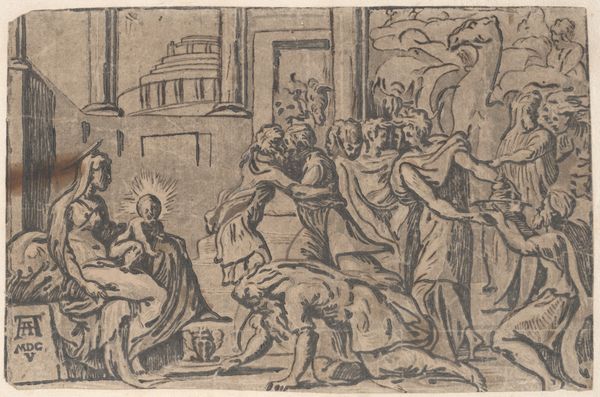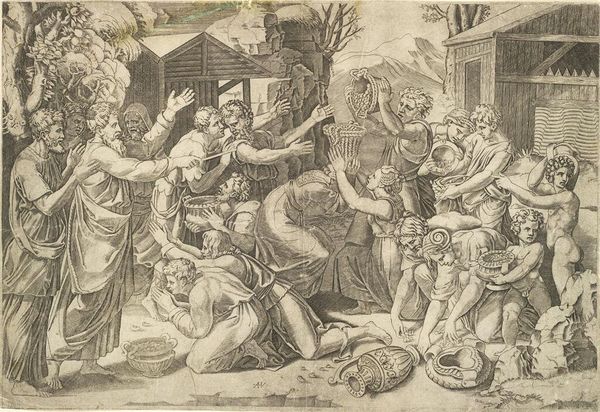
drawing, print, etching
#
drawing
#
allegory
#
narrative-art
#
baroque
# print
#
etching
#
dog
#
landscape
#
classical-realism
#
figuration
#
men
#
history-painting
#
angel
Dimensions: Sheet (Trimmed): 12 1/16 × 17 13/16 in. (30.7 × 45.2 cm)
Copyright: Public Domain
Curator: Look at this etching, "The Expulsion of Hagar," realized sometime between 1646 and 1670 by Charles Massé. My first impression is a stark depiction of sorrow and separation. The monochromatic palette and sharp lines evoke a palpable sense of loss. Editor: Yes, it is striking how Massé used the etching technique to convey this narrative moment. Hagar, her son, and the imposing figure of Abraham amidst this classical setting tell a familiar story, but its impact is in how the social power dynamics are displayed, right? Curator: Precisely. We have Hagar, the enslaved woman, and her child, cast out at the behest of Sarah, Abraham’s wife. Note the presence of the angel intervening, perhaps a symbol of divine protection or a commentary on Hagar's marginalized status and the patriarchal structures at play. How does this reading connect to the artist's production methods, from your perspective? Editor: Thinking about the production process, the labor and materials involved in creating an etching like this are key. The tools, the copper plate, the acid—all elements that facilitate the telling of this tale, a story rooted in social and economic power, played out in this visual form. I'm intrigued by the ways Massé would have understood labor through these classical figures, even those dispossessed like Hagar. Curator: Massé clearly draws from the baroque style with the dramatic figuration and intense emotion. But I also see how the artist infuses classical realism to evoke broader questions about justice and social standing. Consider also how gender, race, and class intersect to influence Hagar's destiny. Editor: That said, beyond those cultural codes and narrative structure, I’m most interested in the materials themselves and the labor process behind them: the way the lines are incised, the distribution of light and shadow—a testament to skill, technique, and material conditions that coalesce to bring a narrative of inequality to life. Curator: Indeed, we see not just the biblical narrative, but a visual manifestation of social hierarchies made strikingly apparent through artistic skill. I wonder how viewers during Massé’s time read this, and what contemporary conversations this piece ignites. Editor: This piece reminds me that every artwork is the culmination of materials and craft, and how social relations profoundly impact the creation and interpretation of objects that reflect inequalities but also challenge power structures. It allows me to think deeper about labor and value.
Comments
No comments
Be the first to comment and join the conversation on the ultimate creative platform.
